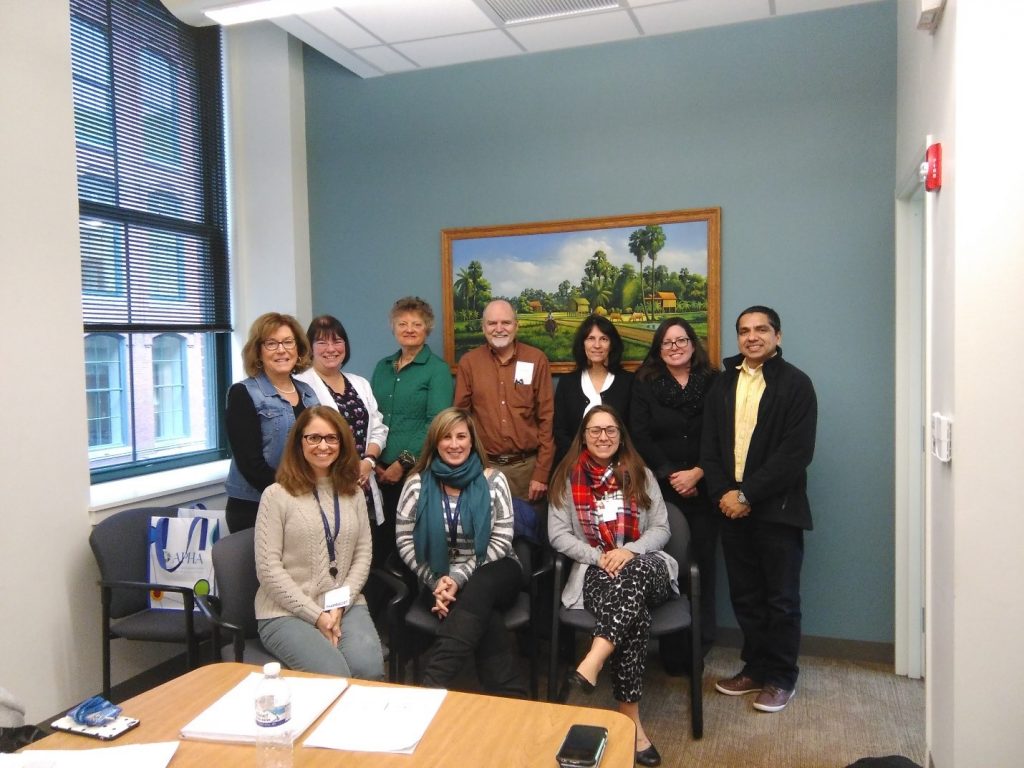Asthma Coalition of Greater Lowell
The Greater Lowell Health Alliance has established respiratory diseases, specifically asthma, as a health priority for the Greater Lowell Area.
- Economic impact of asthma
- The Impact of Asthma | American Lung Association
- The Economic Impact That Asthma Has on the Economy and Families – Financial Wellness (illinois.gov)
- Prevalence of asthma
- Work related asthma
- Measures of impairment due to asthma
Prevalence of Asthma
- 3% of Americans have asthma. Of these 26.5 million, 20.4 million are adults and 6.1 million are children
- Asthma prevalence is higher in children (9.4%) than in adults (7.7%), and higher in females (9.2%) than males (7%)
- Patients with asthma reported 11 million visits to a doctor’s office and 1.7 million visits to hospital outpatient departments
- Asthma results in 439,000 hospitalizations and 1.3 million emergency room visits annually
- More than 3,500 people die of asthma each year, nearly half of whom are age 65 or older. Recent statistics show that half of people with asthma have at least one asthma attack each year, with children (53%) more likely to have an attack than adults (44.9%).
https://acaai.org/asthma/asthma-101/facts-stats/
https://www.frontiersin.org/articles/10.3389/fped.2019.00246/full
Work-Related Asthma
Work-related asthma is asthma triggered by exposure at work. Many asthma triggers can be found in the workplace. Over 300 known or suspected substances in the workplace can cause or worsen asthma. Avoiding triggers can prevent asthma from getting worse.
Worsening asthma or new onset asthma in a worker should raise questions about workplace causes. Asthma symptoms can develop shortly after exposure, or they can develop months or years after repeated exposure to harmful substances.
More than 250 workplace substances have been identified as possible causes of occupational asthma. These substances include:
- Animal substances, such as proteins found in dander, hair, scales, fur, saliva and body wastes.
- Chemicals are used to make paints, varnishes, adhesives, laminates and soldering resin. Other examples include chemicals used to make insulation, packaging materials, foam mattresses and upholstery.
- Enzymes used in detergents and flour conditioners.
- Metals, particularly platinum, chromium, and nickel sulfate.
- Plant substances, including proteins found in natural rubber latex, flour, cereals, cotton, flax, hemp, rye, wheat and papain — a digestive enzyme derived from papaya.
- Respiratory irritants, such as chlorine gas, sulfur dioxide and smoke.
https://www.cdc.gov/niosh/topics/asthma/default.html
https://www.mayoclinic.org/diseases-conditions/occupational-asthma/symptoms-causes/syc-20375772
Measures of Impairment due to Asthma
- 3% of MA children have current asthma
- Among MA children with current asthma
- 9% had activity limitations due to asthma, past year
- 2% had an asthma attack or episode, past year
- 5% experienced symptoms of asthma at least once, in the past 30 days
- 9% had sleep disruption due to asthma, past 30 days
- 6% used an inhaled short-acting beta agonist 1 or more times per day
Our Impact
The GLHA partners with the Asthma Coalition of Greater Lowell to help address the unmet needs in this area. The Asthma Coalition of Greater Lowell has established five major goals:
- Improve communications among providers, school nurses, and patients
- Develop unified asthma education and messaging, identifying best curriculum and changes in practice
- Seek grant funding for asthma programming
- Develop daycare/ staff training on asthma triggers and solutions in indoor environments
- Get schools involved in the fight against asthma
Asthma Coalition Of Greater Lowell Mission Statement:
The Asthma Coalition of Greater Lowell envisions healthy communities for all where asthma is reduced and well managed.
Asthma Coalition of Greater Lowell Vision Statement:
The Asthma Coalition of Greater Lowell seeks to reduce the burden of asthma in Greater Lowell communities by;
- focusing on minimizing the disproportionate impact of asthma in racial/ethnic and low-income populations
- promoting asthma awareness and disease prevention
- expanding and improving the quality of asthma education, management, and services
- mobilizing existing capacities and partnerships between all community stakeholders to share resources, achieve a unified message, and advocate for system and policy changes
Asthma Coalition of Greater Lowell meets six times a year. Please check out the 2024 schedule!
| Month/Date | Time |
| January 31, 2024 | 1:00pm |
For more information contact: David Turcotte
Meeting Venue/Address: Virtually
Check out the Resources section below for tips, cleaning product recipes, downloading freely-available promotion materials, info on MA Health Promotion etc. & more:
Managing Asthma in the School Environment
Caring for Kids with Asthma: A Guide for Massachusetts Child Care Programs
Asthma and Schools
Healthy Home and Cleaning Tip Sheet
Twelve Home Cleaning Recipes
Options To Get Rid of Mold
Safer Cleaning Recipes from TURI:
Five Ways to Find Safer Cleaners
Six Home Cleaning Recipes
Links to other Resources & References:
Free Promotion Materials: Massachusetts Health Promotion Clearing House
Caring for Kids with Asthma: A Guide for Massachusetts Child Care Programs
Managing Asthma in the School Environment (EPA)
National Healthy Homes Training Center
National Center For Healthy Housing
Healthy Homes Principles:
Eight Tips For Keeping a Healthy Home
Making Homes Safer for Families
The Principles of a Healthy Home
Download and view an important presentation by the National Healthy Homes Training Center on Asthma in the Home and Workplace: Risk Factors, Triggers and Prevention.
Links to other Asthma Coalitions or Organizations:
Pioneer Valley Asthma Coalition (Springfield, MA)
Regional Asthma Management & Prevention (Oakland, California)

